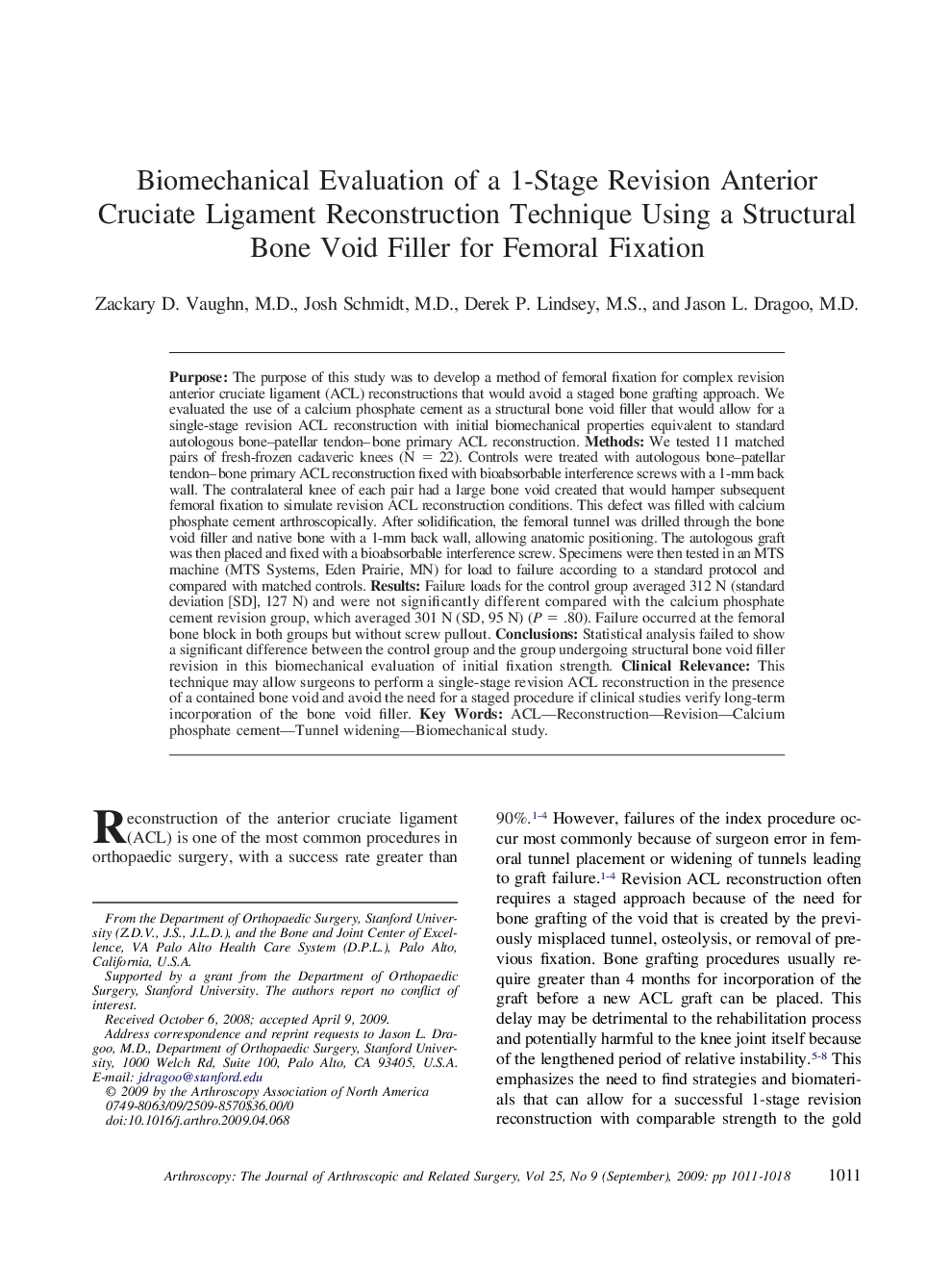| Article ID | Journal | Published Year | Pages | File Type |
|---|---|---|---|---|
| 4046360 | Arthroscopy: The Journal of Arthroscopic & Related Surgery | 2009 | 8 Pages |
PurposeThe purpose of this study was to develop a method of femoral fixation for complex revision anterior cruciate ligament (ACL) reconstructions that would avoid a staged bone grafting approach. We evaluated the use of a calcium phosphate cement as a structural bone void filler that would allow for a single-stage revision ACL reconstruction with initial biomechanical properties equivalent to standard autologous bone–patellar tendon–bone primary ACL reconstruction.MethodsWe tested 11 matched pairs of fresh-frozen cadaveric knees (N = 22). Controls were treated with autologous bone–patellar tendon–bone primary ACL reconstruction fixed with bioabsorbable interference screws with a 1-mm back wall. The contralateral knee of each pair had a large bone void created that would hamper subsequent femoral fixation to simulate revision ACL reconstruction conditions. This defect was filled with calcium phosphate cement arthroscopically. After solidification, the femoral tunnel was drilled through the bone void filler and native bone with a 1-mm back wall, allowing anatomic positioning. The autologous graft was then placed and fixed with a bioabsorbable interference screw. Specimens were then tested in an MTS machine (MTS Systems, Eden Prairie, MN) for load to failure according to a standard protocol and compared with matched controls.ResultsFailure loads for the control group averaged 312 N (standard deviation [SD], 127 N) and were not significantly different compared with the calcium phosphate cement revision group, which averaged 301 N (SD, 95 N) (P = .80). Failure occurred at the femoral bone block in both groups but without screw pullout.ConclusionsStatistical analysis failed to show a significant difference between the control group and the group undergoing structural bone void filler revision in this biomechanical evaluation of initial fixation strength.Clinical RelevanceThis technique may allow surgeons to perform a single-stage revision ACL reconstruction in the presence of a contained bone void and avoid the need for a staged procedure if clinical studies verify long-term incorporation of the bone void filler.
